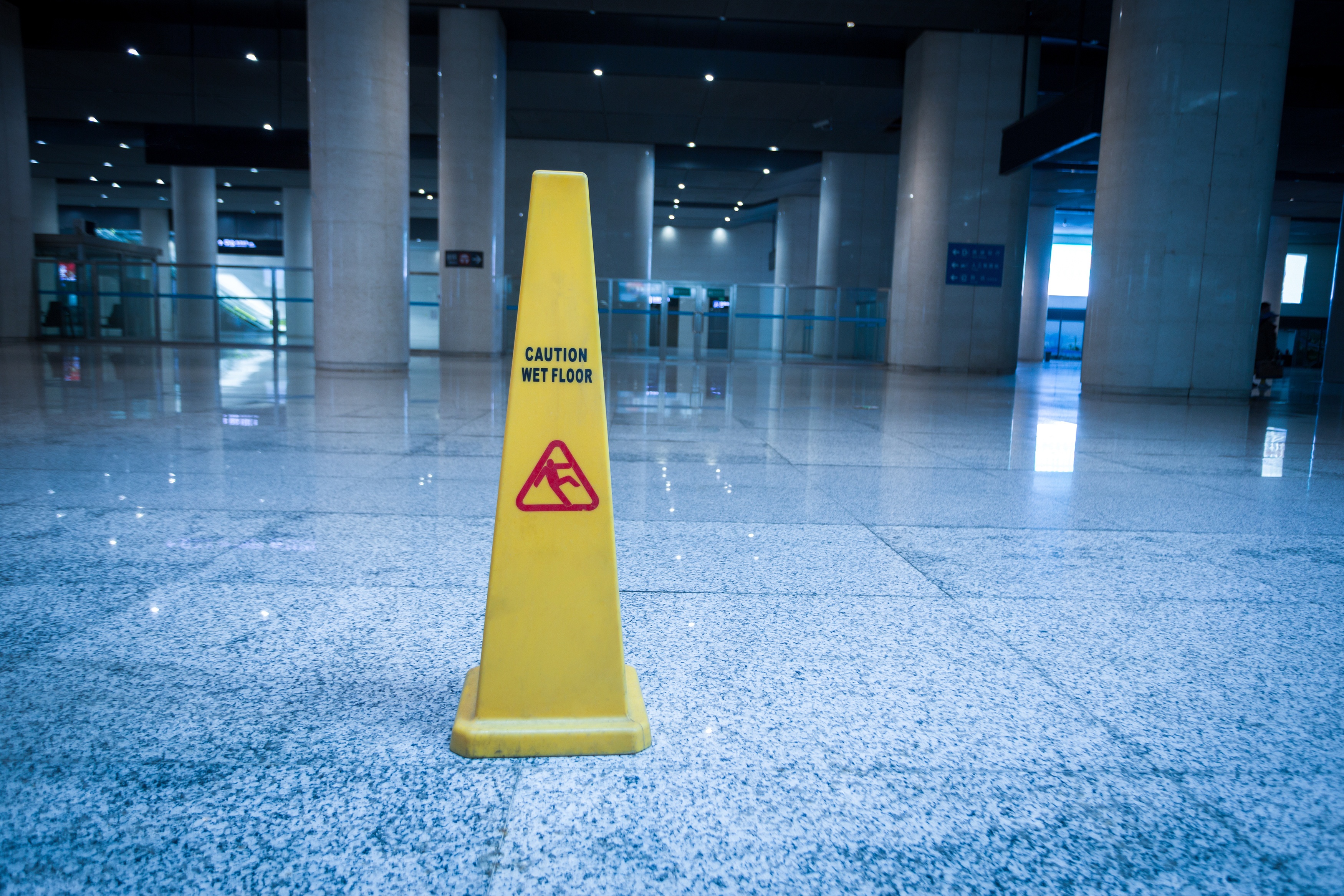Dangerous Work
Unless you’re accident-prone Andy Dwyer from TV’s “Parks and Recreation,” you probably don’t associate your office environment with physical pain or danger. After all, it’s not like you spend your workday handling hazardous materials, manning the assembly line or using turbo-charged power tools.
Yet you might be surprised to learn that roughly 80,000 private-industry office employees and administrative workers suffer on-the-job injuries each year, based on Bureau of Labor Statistics estimates. The most common culprits are slips, trips and falls, followed by being struck by, caught on or knocking into objects and ergonomic injuries — all of which are largely preventable.
While compliance with OSHA regulations and safety codes are clearly up to the building owner and each employer, creating a safe work environment also requires some common sense on everyone’s part. In addition to wearing sensible shoes, keeping your finger out of the stapler and not looking down at your phone while you’re racing to the meeting in the conference room, here are a few basic no-brainers for staying safe in the office:
Clear the decks
Get rid of storage boxes, discarded office chairs, broken coat racks, old holiday decorations and any other detritus that might have been piled up or abandoned in the hallways or between desks. Also make sure electrical and computer cords aren’t stretched across possible pathways where they can trip people up.
Shut it
If you open a desk drawer, file cabinet or closet, close it — even if you’re going to open it again in a couple of minutes. You’d be amazed how many people (me included!) bark their shins, trip, fall or run into doors that were momentarily left ajar. And open just one drawer at a time. It’s not only dangerous, but nobody wants to be the one who has to put everything back in its proper place when a file cabinet tips over!
Stay grounded
Don’t stand on chairs, desks, bookcases, file cabinets or fellow employees to reach something or put up that mistletoe over your cubicle. If you are aiming high, use a proper stepladder that is fully opened and placed on level ground. Don’t climb higher than the step indicated as the highest one that is safe to stand on.
Watch your stack
Speaking of reach, use some common sense when stacking stuff. Don’t pile boxes too high, and make sure the weightiest ones are closest to the floor. Try not to put heavy books or objects on top shelves or atop cabinets. Most important, make sure nothing — including furniture — is higher than 18 inches below fire sprinkler heads.
Get ergonomic
Because you probably spend the bulk of your day seated at your desk working on a computer, you might think getting flabby is the biggest risk you face. But office work also makes you prone to strains, pains and repetitive stress injuries that can become quite debilitating. Make sure you have adjustable equipment — chair, keyboard, monitor, mouse, etc. — and know how to make it work in a way that protects your health.
Going to the office every day shouldn’t be dangerous. Keep these rules in mind and you’re a lot less likely to ever get injured on the job, need worker’s comp or end up sitting next to Andy Dwyer in the ER.

Written by: Diane Landsman
Diane Landsman is familiar to many in the HR community as a former editorial director at Human Capital Media. Now an independent communications strategist, writer and editor she helps enterprises educate, engage, influence and sometimes even entertain their audiences. Her specialty is crafting original content across media channels, from websites that attract searchers and keep them engaged to email campaigns, articles that put organizations on the map, and executive-level whitepapers, speeches, and op/ed pieces.


